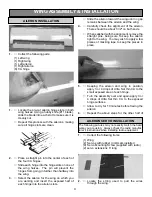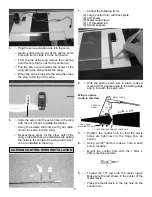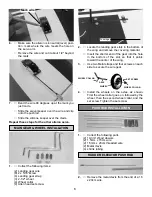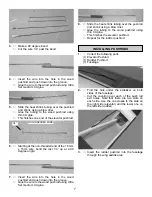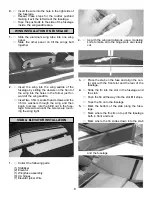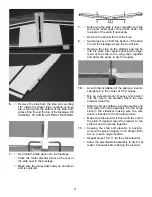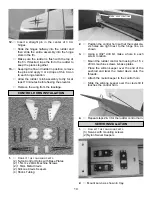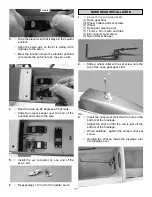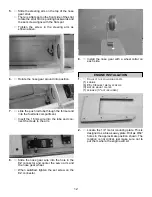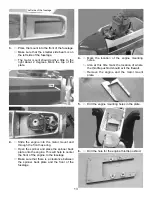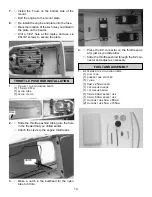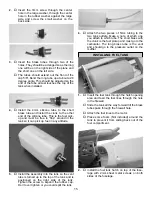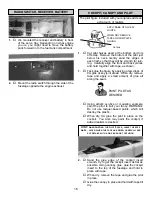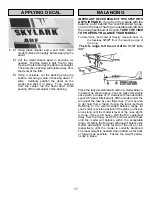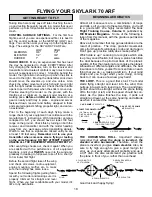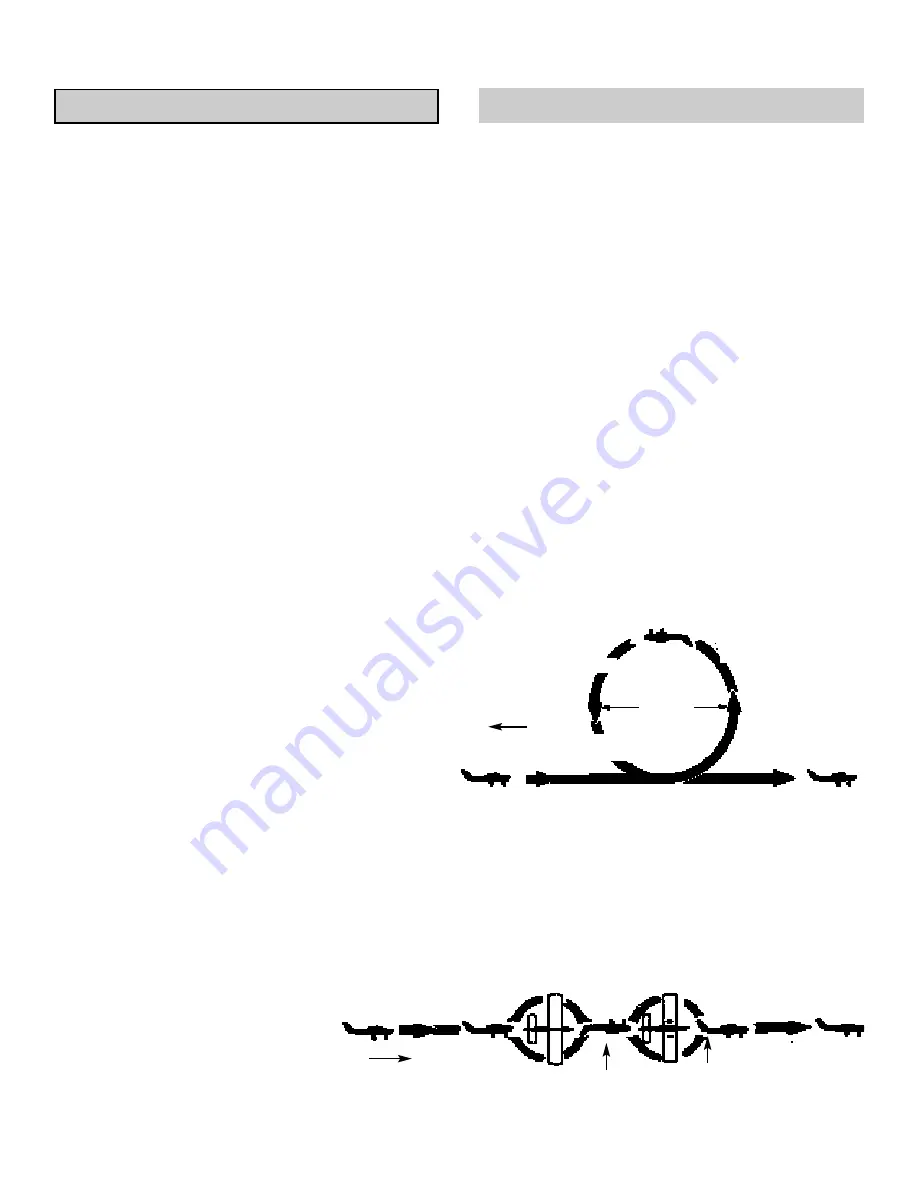
18
FLYING YOUR SKYLARK 70 ARF
GETTING READY TO FLY
BEGINNING AEROBATICS
Taking time here really pays off later. Rushing the set-
up and testing frequently results in a model that never
performs up to its full potential and may even lead to a
crash.
CONTROL SURFACE SETTINGS.
For the first few
flights, even if you are an experienced flier, it is best to
set the control surfaces at the GENTLE (LOW) set-
tings. You can then work your way up to the higher set-
tings. The settings for the SKYLARK 70 ARF are:
LOW
HIGH
AILERONS
3/8”
1/2"
ELEVATOR
1/2”
3/4"
RUDDER
1"
same
RADIO CHECK.
Many an experienced flier has rued
the day he neglected to check EVERYTHING! After
fully charging the batteries, turn on the receiver and
transmitter and actuate all controls many times to make
sure all responses are correct. Standing behind the
model, the right aileron should go up when the stick is
moved to the right. Moving the transmitter stick down
should move the elevator up, and vice versa. Also
check the wheel movement, which should move right
with the right rudder movement. Check that the throttle
opens to permit full power when the stick is moved up.
Practice steering the model on the ground, with the
throttle set at minimum, to keep model moving at a
walking pace.
Before and after all tests
, make sure all
gear is neatly and firmly in place - engine and servos
fastened down, receiver and battery wrapped in foam
and secured against shifting, propeller tight, and anten-
na extended.
Prior to the beginning of each day's flying, make a
range check of your equipment in accordance with the
manufacturer's instructions. With transmitter antenna
collapsed to 6-8", you should have at least 100 feet
range on the ground. Check this by turning on both the
receiver and transmitter and with the model heading
away from you, walk away while transmitting signals.
Watch to see that no signals are missed until you are
at least 100 feet away.
Remember not to use your
transmitter when someone else is flying or testing
on the same frequency. DO NOT ATTEMPT FLIGHTS
UNLESS ALL THE EQUIPMENT WORKS PERFECTLY.
After everything checks out, check it again! When you
are satisfied with the performance of all equipment
functions, point your
TIGER'S
nose into the wind and,
gradually increasing to full power, take off for a short (2
to 3-minute) first flight.
Before the second flight, take off the wing
and check all screws, radio equipment,
engine mounting, muffler, etc. to make
sure that nothing has come loose.
Spend the following flights getting famil-
iar with your model and making sure it is
properly trimmed for straight and level
flight. When you feel comfortable with your model, it's
time to try aerobatics.
Almost all maneuvers are a combination of loops
and rolls, so if you can do these two things, you're off
to a good start! We highly recommend the book
Flight Training Course, Volume II
, published by
R/C Modeler Magazine.
Some of the following is
taken from this manual, with the gracious permission
of the magazine.
Above all, remember that top gun aerobatics are the
result of practice. The crisp, graceful movements
come from the pilot's willingness to do and do it again.
Don't give up; practice really does make perfect!
Which side is up?
Learning to recognize which side
is up may sound foolish, but many a plane has bitten
the dust because the pilot lost track of the plane's
position. Other than learning to recognize the plane's
silhouette at different angles and attitudes, the best
insurance is to force yourself to concentrate on each
thing that you do, i.e. making a left turn. If your mind
strays and you forget what you're doing, coming
back to it can cause a few new grey hairs!
THE LOOP.
This is a good first stunt. The model
starts flying straight and level into the wind, then
pulls up into a smooth, round loop. The up and down
portion should be straight, without the plane falling
off to the right or left, and the speed should be con-
stant. As the plane finishes the loop, it pulls out
straight and level, at the same heading and altitude
as when it entered the maneuver.
THE HORIZONTAL ROLL.
Important! Always
remember that,
when the plane is inverted, the
elevator works backwards.
Therefore, when the
plane is inverted, you give
down elevator.
Also, be
sure to fly high enough to give a good margin for
error, as your early attempts will probably end up in
a 30º dive. We also recommend you practice with
the plane in front of you, rather than overhead.
Good luck and happy flying!
2.
DOWN ELEVATOR
4.
UP ELEVATOR
3.
RELEASE AILERON
CONTROL
1.
FULL RIGHT OR
LEFT AILERON
WIND
WIND
(OPTIONAL, BUT
GIVES A MORE PRE-
CISE LOOP
1.
UP ELEVATOR
2. EASE OFF OF SOME
UP
ELEVATOR
5. EASE OFF OF
UP ELEVA-
TOR, OPEN THROTTLE
3. ADD SOME
UP ELEVATOR
4. THROTTLE DOWN TO IDLE
75-150 FT.

